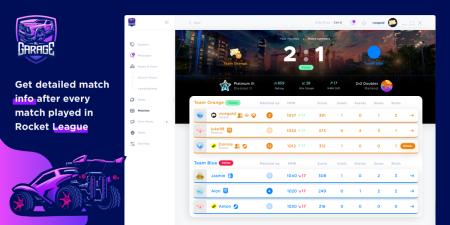Shalthis Says: A Lesson in Shoutcasting - Part 1
Being a caster for a game like Rocket League is hard work. While you may be tempted to explain something, you often don’t have the time to. Anyway, first things first, you need to figure out if you prefer play-by-play or color. Now, this article assumes the basics – you have a solid understanding of how the game works & the scene AND you have a good presenter voice. The latter shouldn’t be cartoony but clear even when excited. Keep in mind that your energy usually transfers to the audience.
Casters need to understand their game and the players/teams. Assuming you don’t need any help with the ‘big two’ that I mentioned, it comes down to figuring out your role. As play-by-play, it’s almost like being on the radio with a little bit of color mixed in. Your job is, essentially to say what you see. Who’s passing to whom, who took the shot, who cleared the ball, etc. The little bit of color comes in when you see them attempting an offensive or defensive play, the logic behind their decision-making, etc. Or that might be the job of whoever’s on color.
As a color commentator, knowledge is power. Former players are great in color roles. Color casters add some much-needed texture to a broadcast. While the color caster may not be the predominant voice in the cast, they bring a layer of knowledge that the person in play-by-play may not have. The replay is the boon for whomever is doing color, as it’s one of the few times you can elaborate on a thought without stepping on the action.
As a Rocket League caster, YOU WILL step on the action or miss something that you want to talk about. It’s okay if that happens. The game moves really fast so you need a lot of practice to know what the slow moments usually are. The best thing to do is watch a lot of competitive Rocket League and listen to what the other casters do and try to spot those moments where conversation can happen.
What you really need to avoid is talking over your partner. The best way to do this is via practice and listening a lot to your co-caster and finding the best time to come in. If your co-caster is someone you’ve heard speak a lot, that’s good. You already know their speech patterns. Odds are, you’ll be working with someone new to you who you couldn’t listen to beforehand. That’s okay. If you take more of a color role, you will quickly learn about your co-caster.
When it comes to practice, I usually recommend recording audio of yourself with any game, and then listen to your recording. Hopefully, you avoid the bane of any broadcaster – dead air. Going quiet while on-air is a terrible thing. Your recording will tell you how you sound. You’ll get better in time, just remember that.
In Part 2, I’ll look at the different regions and what you need to know as a caster.
Recent Articles
Comments
Please login to participate in this article discussion!






General_Kenobi
narratuer
narratuer
narratuer
narratuer
narratuer
narratuer
narratuer
narratuer
narratuer
narratuer
narratuer
narratuer
narratuer
narratuer
narratuer
narratuer
narratuer
narratuer
narratuer
narratuer
narratuer
narratuer
narratuer
narratuer
narratuer
narratuer
narratuer
narratuer
narratuer
narratuer
narratuer
narratuer
narratuer
narratuer
narratuer
narratuer
narratuer
narratuer
narratuer
narratuer
narratuer
narratuer
narratuer
narratuer
narratuer
narratuer
narratuer
narratuer
narratuer
narratuer
narratuer
narratuer
narratuer
narratuer
narratuer
narratuer
narratuer
narratuer
narratuer
narratuer
narratuer
narratuer
narratuer
narratuer
narratuer
narratuer
narratuer
narratuer
narratuer
narratuer
narratuer
narratuer
narratuer
narratuer
narratuer
narratuer
narratuer
narratuer
narratuer
narratuer
narratuer
narratuer
narratuer
narratuer
narratuer
narratuer
narratuer
narratuer
narratuer
narratuer
narratuer
narratuer
narratuer
narratuer
narratuer
narratuer
narratuer
narratuer
narratuer